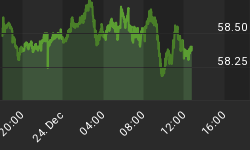No one portfolio is suitable for all investors and no lifestyle or target date fund has a portfolio that is appropriate for all investors of the same age or projected retirement date. Building a portfolio that is tailored specifically to you is a better way to go.
Some Key Issues to Understand About Yourself:
When designing your own portfolio, you need to take into consideration at least these issues:
- Your level of need for current income from your portfolio
- Your tolerance for volatility based on requirements for capital withdrawals to pay for lifestyle or particular capital needs, such as college tuition
- Your level of emotional tolerance for portfolio value fluctuation
- Your ability to replace potential capital losses with earnings from work
- Your other assets and sources or income, such as rents or pensions
- Your ability, willingness, available time and self-discipline to research and manage your portfolio's assets
- The level of total return you seek and your time horizon for achievement of expected returns.
Lifecycle / Target Date Funds:
The lifecycle / target date funds concept is based on a simple principle that has some merit, but that must be tweaked for each specific investor. The principle is similar to Ibbotson's ratio of "human capital" versus "financial capital" to describe the investor's condition.
Human capital represents future earnings potential, whereas financial capital represents realized asset accumulation. Your total capital is the sum of the two.
When you are young and beginning your investments, you have 100% human capital and 0% financial capital. After you retire and reach the point that re-employment or operating your own business is no longer a reasonable option, you have 0% human capital and 100% financial capital.
The problem with lifecycle / target date funds is that different people do not reach the same points on the human capital - to - financial capital scale" ("HC-FC scale") at the same ages or upon retirement from a career or upon selling a business.
Lifetime Capital Sufficiency:
We think it's important to add another scale perpendicular to the HC-FC scale. Let's call it the lifetime capital sufficiency scale ("LCS" scale). It is indexed to that point in life (whatever the chronologic age) that the amount of accumulated financial capital is just sufficient to supply all of the money you need for the rest of your life to maintain your lifestyle, and to fund any capital payments that are in addition to life style. That lifetime capital sufficiency would be rated 100%.
The two scales together on a chart make for an interesting plot of your condition as shown here.

You can see on the chart that the LCS scale goes from 0% when you have no financial capital to 100% when you have just enough to live all your remaining life on your assets without working again. The scale continues to amounts in excess of lifetime capital sufficiency.
Notice that chronologic age does not appear anywhere on the chart.
You could think of your "financial age as 0 to 100 on the "% Total Capital as Financial Capital" scale (the inverse of "% Total Capital as Human Capital"), but your chronologic age is only important in estimating the number of probable years of remaining life. Even then other factors come into play. Someone 80 years old could live for 20 years or more, while someone with a terminal disease at age 45 may have less than 3 years to live.
Problem With a Popular Maxim:
For those reasons, we find the old maxim, "Hold you age in bonds" (e.g. 50% bonds at 50 years of age) to be overly general and inconsistent with the diversity of conditions that one may be in, as suggested by the chart. Maxims may be born in wisdom, but cannot be applied blindly across the board to every person and situation. Lifecycle and target date funds are flawed in the same kind of way. They are overly general and do not recognize the myriad of conditions (including financial age and lifetime capital sufficiency) of specific investors.
If you reach 100% lifetime capital sufficiency at any age (G, F, H, C and D on the chart), you could retire then and there.
If you reach 0% human capital and do not have 100% lifetime capital sufficiency (E on the chart), you are in trouble.
If you reach the 0% human capital / 100% financial capital / 100% lifetime capital sufficiency condition (C on the chart), you are OK, but you have little room for mistakes. You may need to give capital preservation priority over capital appreciation to minimize the risk of outliving your assets due to the combination of regular withdrawals and portfolio volatility.
If you reach 100% financial capital (0% human capital remaining) and your lifetime capital sufficiency is well beyond 100% (D on the chart), you can reasonably choose between a capital conservation, low volatility, income biased portfolio; or a more aggressive pursuit of capital appreciation with attendant higher volatility and possibly less income bias.
Similarly, if you reach 100% lifetime capital sufficiency level, but have not yet reached 100% financial capital stage -- more human capital remaining -- (F on the chart), you do not need to be as conservative or income oriented as if you had no remaining human capital.
As you plan your portfolio, evaluate the seven issues listed above and try to place yourself in the chart of financial capital, human capital and lifetime capital sufficiency to orient yourself before you make your investment decisions.
















